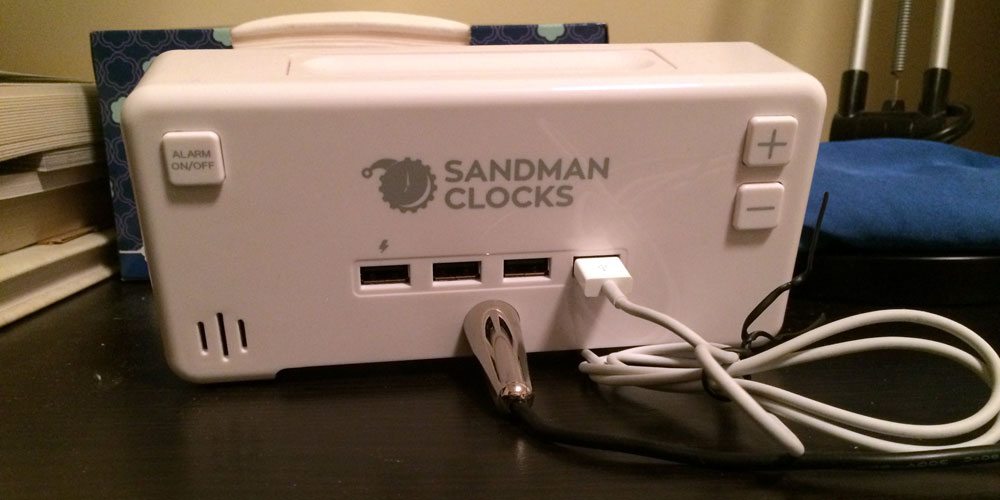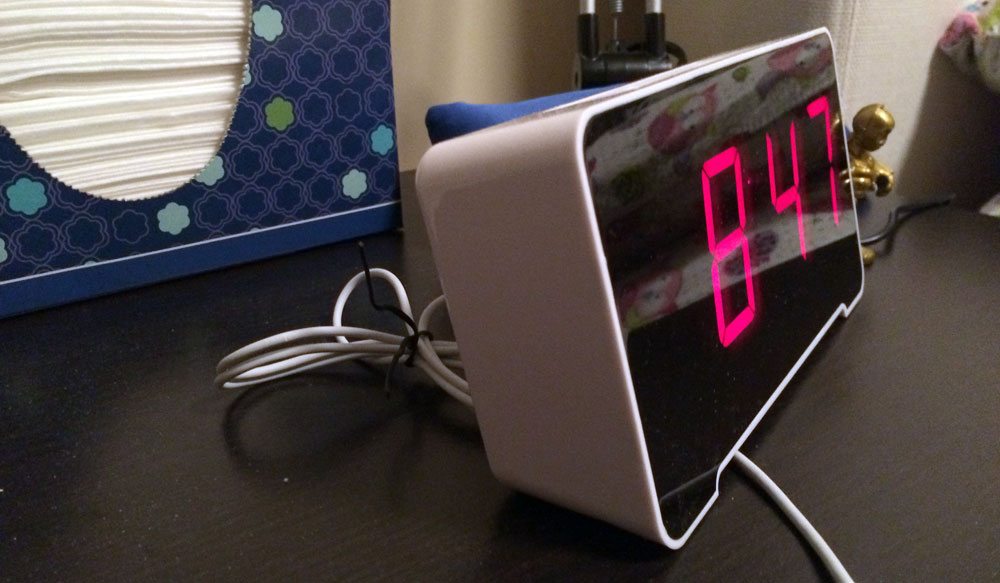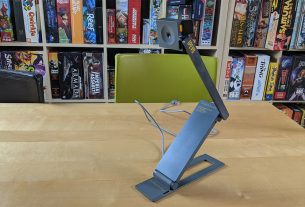
If you keep your phone or other gadgets on your bedside table overnight, you might have a mess of charging cables and plugs, too… or you wake up to find that your late-night Netflix binging has left you starting the day with 17% battery. The Sandman Clock from Palo Alto Innovation aims to solve that, with four built-in USB ports and a cable pass-through.

The clock itself has a fairly long power cord with an adapter brick in the middle. The cord has a metal sheath where it plugs into the clock that serves a dual purpose—it keeps the cord from getting bent near the tip, and it acts as a bit of a kickstand to keep the clock from tipping back. The clock does seem fairly stable despite its angled-back appearance, but the added footprint doesn’t hurt.
The clock only has three buttons on the back and a large snooze on the front. Setting it is simple (and instructions are conveniently printed on the bottom): just use the +/- buttons to set the time, or hold the alarm button to set the alarm time or choose from two alarm volumes. Tapping the alarm button turns the alarm on and off.
The one big downside to the ease of setting the clock, though, is that the + button is really easy to push when you reach for the clock or pick it up. Since you don’t have to press and hold anything before it switches to “adjust time” mode, it’s easy to change the time on the clock when you’re fumbling for the snooze button. That seems like a huge oversight.

You can also adjust the brightness of the clock by holding the snooze button while you push the +/- buttons, and the clock will also automatically adjust brightness based on surrounding light levels. I really like this feature, because I’ve had clocks that are either too dim to see during the day or way too bright at night. When you turn out the lights, the Sandman Clock dims itself within a minute. The extra-large numbers are easy for my near-sighted eyes to see without my glasses, too.

The USB ports on the back let you plug in up to four devices without needing a power strip, and the bottom of the clock has a raised center so that you can run cables easily to the front of the clock. Of course, the cables are only hidden from the front—from the side or back, you’ll still have a bunch of cables to deal with.
Overall, I like the simple, clean look of the clock, and there are some nice features. It’s great for keeping my phone charged at night, but I probably won’t try to cram four devices on my small nightstand usually. I love the auto-dim feature and the large numbers. I do worry that I’m going to change the time while reaching for the snooze button—or that my toddler will accidentally on purpose change the time if she discovers those buttons—so I’ll probably check it against my phone’s time often.
The Sandman Clock retails for $49.99 and is available from Amazon or directly from PAI.
Disclosure: I received a sample of the Sandman Clock for review purposes.




“The one big downside to the ease of setting the clock”
What is this “setting the clock” thing of which you speak? Last I checked the year was 2017 and the options for clocks maintaining their displayed time in sync with objective reality include:
-Radio signal received from the atomic clock maintained by the Naval Observatory
-cell towers
-relayed from my phone using USB, NFC or Bluetooth
-Wi-Fi
Well, sure, but there are still plenty of clocks that need to be set. I use my phone and computer most of the time, but I still like having a large-display alarm clock and most of the ones I’ve used still require you to set the time yourself. And we’ve got several analog clocks around the house that are battery-operated and still totally offline. But I guess if you don’t have any of those at all, then pushing buttons to set the time would be really hard. Good thing the instructions are printed on the bottom!